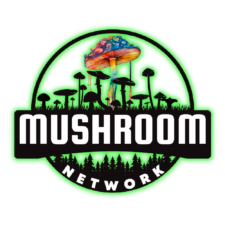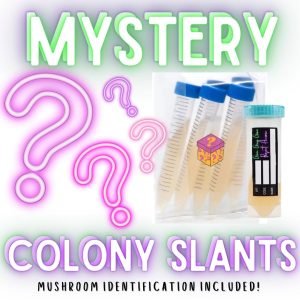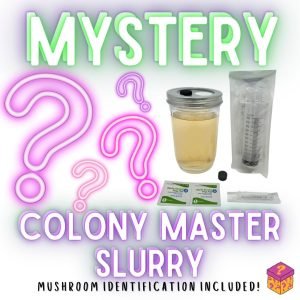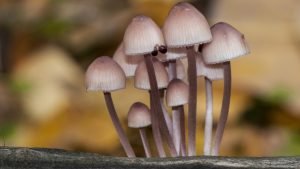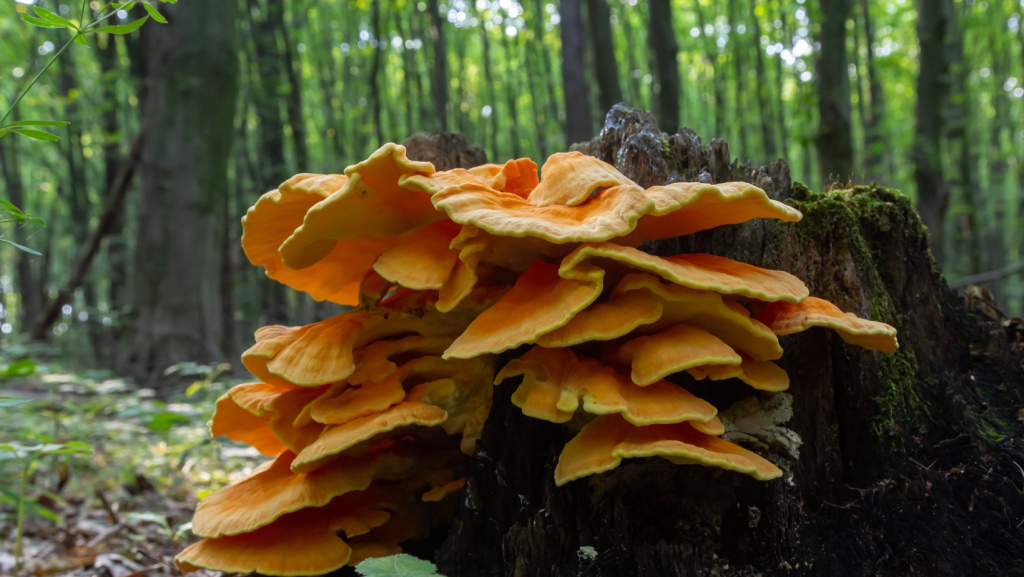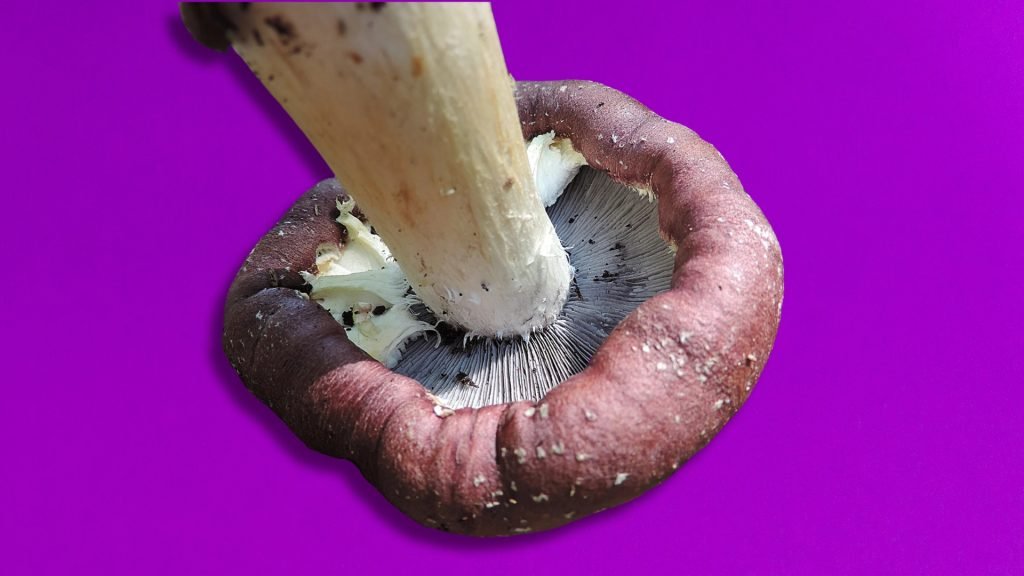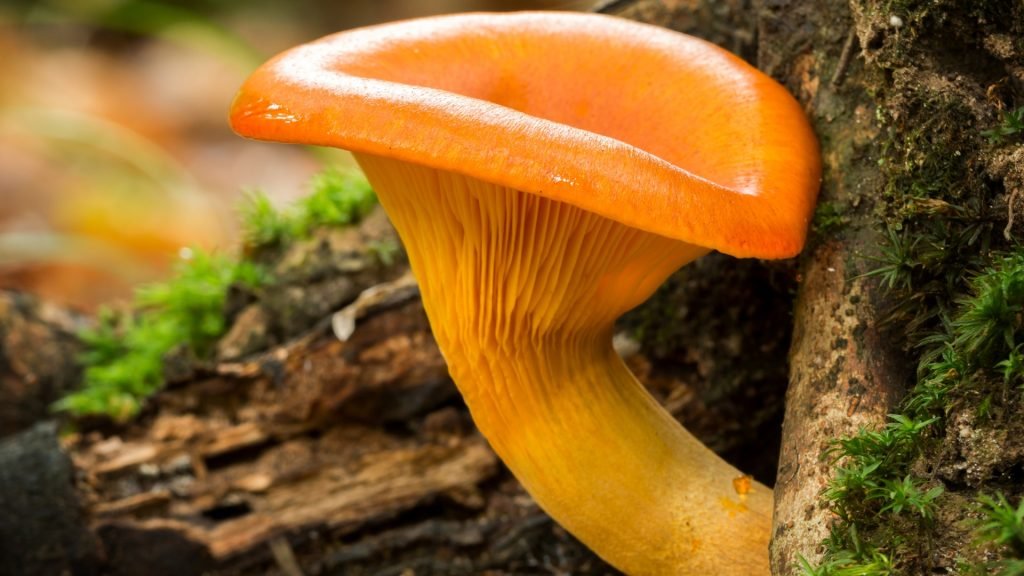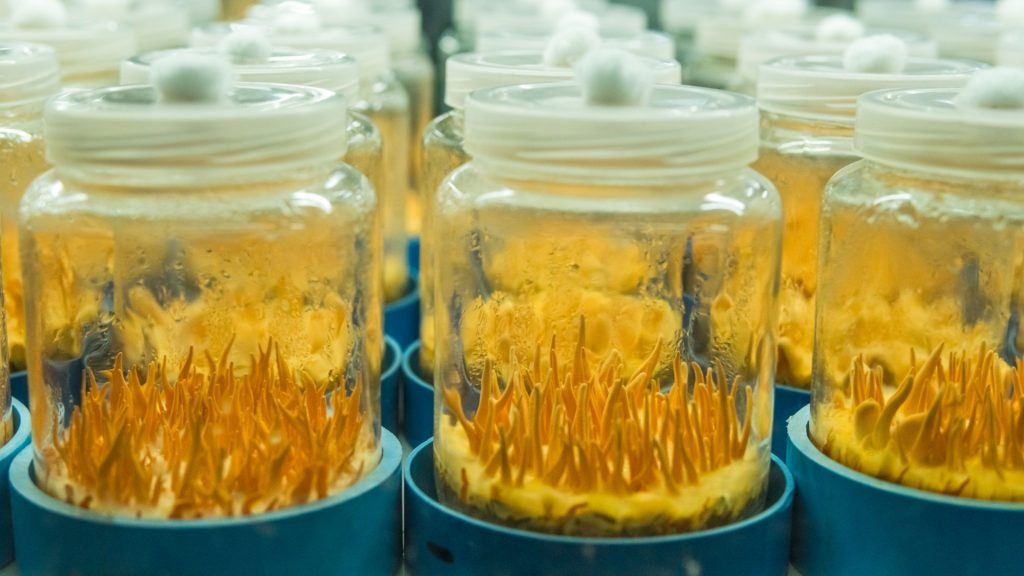Welcome to the enchanting world of Turkey Tail mushrooms, where the beauty of nature meets the frontier of medicinal research. Let’s delve into the vibrant life of Trametes Versicolor, a mushroom as rich in history as it is in color.
SCIENTIFIC NAME:
(Trametes Versicolor)
COMMON NAME(S):
Turkey Tail | Cloud Mushroom | Multicolored Polypore | Yun Zhi | Kawaratake
I-NAME:
????
Founding Mycologist/Discovered By:
-Unknown-
If you have information, please help us enrich our database!

RECOMMENDED TEMPERATURES
Colonizing Temps:75° – 80°F | Fruiting Temps:55° – 70°F |
SPORE COLOR:
WHITE to YELLOWISH
Embark on an exploration of Turkey Tail, a mushroom admired for its striking colors and revered for its therapeutic properties. A symbol of longevity and health, it’s a testament to the intricate connections between us and the fungal kingdom.
DESCRIPTION:
Turkey Tail mushrooms are distinguished by their thin, fan-shaped caps with concentric zones of different colors, resembling a turkey’s tail. They usually display a stunning array of colors – from browns and reds to blues and greens. The undersurface features tiny pores instead of gills, characteristic of polypores.
INTENDED USES:



HABITAT AND DISTRIBUTION:
Trametes Versicolor, known for its adaptability, flourishes in diverse climates, primarily in temperate regions. It colonizes various hardwoods, often seen adorning the fallen logs and stumps in deciduous forests. This mushroom’s global distribution underscores its ecological resilience, thriving from North America’s shaded forests to the humid woodlands of Asia. Its preference for well-rotted wood often makes it a common sight in managed woodland areas and even urban parks, indicating its versatility in adapting to varying environmental conditions.
ECOLOGICAL ROLE:
Turkey Tail mushrooms play an integral role in forest ecosystems. As saprobic decomposers, they break down complex organic materials like lignin and cellulose in dead wood, facilitating nutrient recycling. This process is crucial for forest health, as it enriches the soil and supports new plant growth. Beyond decomposition, Turkey Tail also engages in symbiotic relationships with other forest organisms, contributing to a balanced ecosystem. Its presence can be an indicator of a healthy, biodiverse woodland area, making it an important species for ecological studies and conservation efforts.
GROWTH AND CULTIVATION:
Cultivating Trametes Versicolor is an intriguing endeavor for mushroom enthusiasts. It requires a balance of specific conditions to mimic its natural habitat. Optimal growth is achieved on sterilized hardwood substrates, such as oak or maple. These substrates can be used in forms like logs, chips, or sawdust. The cultivation process involves inoculating the substrate with Turkey Tail spawn and maintaining a humid, well-ventilated environment. The growth cycle, from inoculation to fruiting, can span several months, requiring patience and careful monitoring. This mushroom’s cultivation not only serves as a hobby but also has implications in medicinal research, as cultivators can explore its health benefits.
HISTORICAL & CULTURAL INFO:
Turkey Tail has a long history in Eastern medicine, particularly in China and Japan, where it has been used for centuries. Its use in traditional healing practices has sparked a surge in scientific interest in the West.
GENETIC LINEAGE/HISTORY:
Research is ongoing to understand the genetic diversity of Turkey Tail strains and their varied medicinal properties. This research is crucial for understanding how environmental factors influence its medicinal qualities.
CHEMICAL COMPOSITION:
Rich in polysaccharides like PSK and PSP, Turkey Tail is also a source of beta-glucans and antioxidants. These compounds are central to its immune-boosting and potential anti-cancer properties.
MEDICAL PROPERTIES (if applicable):
The medicinal properties of Turkey Tail are widely recognized, particularly its immune-boosting effects. Polysaccharide-K (PSK) and Polysaccharopeptide (PSP), two key compounds found in Turkey Tail, are known for their immunomodulatory properties. Studies have shown these compounds can enhance the immune response, making them valuable in cancer therapy as adjunctive treatments. They are believed to help in restoring immune system function post-chemotherapy. Turkey Tail also exhibits potential in gut health, with its prebiotic properties fostering beneficial gut bacteria. Its anti-inflammatory and antioxidant properties further contribute to its therapeutic value, making it a subject of ongoing research in the medical community.
CULINARY USES (if applicable):
While Turkey Tail is not commonly used in culinary applications due to its tough and leathery texture, it finds its place in the preparation of healthful teas and broths. When brewed as a tea, it imparts an earthy flavor and is often combined with other medicinal herbs. This preparation method is believed to extract its beneficial compounds, making it a popular drink in traditional wellness practices. In supplement form, Turkey Tail powder is sometimes added to smoothies or health bars, providing an easy way to incorporate its benefits into daily diets.

CAUTIONS & WARNINGS:
It is important to consult a doctor before consuming any mushrooms, especially if you have a pre-existing medical condition or are taking medication.
FINAL CONSIDERATIONS:
Turkey Tail is not just a mushroom; it’s a bridge between ancient wisdom and modern science. Explore its potential in our 🍄 Marketplace. Seize the opportunity to explore the world of Turkey Tail, with products ranging from supplements to cultivation kits in our dynamic 🍄 Marketplace.
Don’t forget to check out the 🍄 Mushroom Network’s Marketplace to see what’s available. But hurry, our shelves are constantly evolving, and you wouldn’t want to miss out on this wonderful mushroom. Join our growing network of Patrons, Genetics, and Mycologist Vendors only on the 🍄 Mushroom Network!
FAQs:
Their high content of polysaccharides like PSK and PSP sets them apart, offering unique immune-boosting properties.
Yes, though it requires patience and specific conditions like hardwood substrate and a moist environment.
It’s often used as a complementary therapy to boost the immune system during cancer treatments.
It’s generally considered safe, but allergies and interactions with certain medications are possible.
As we close this chapter on Turkey Tail, let’s reflect on its kaleidoscope of colors and contributions to health and ecology. Remember, every mushroom tells a story, and Turkey Tail’s is one of resilience and healing. Keep exploring and stay mushroom-minded!
MYCO-CLOSINGS:
As we close this chapter on Turkey Tail, let’s reflect on its kaleidoscope of colors and contributions to health and ecology. Remember, every mushroom tells a story, and Turkey Tail’s is one of resilience and healing. Keep exploring and stay mushroom-minded!
Related Articles:
The Vibrant World of Trametes Versicolor
In the eclectic ensemble of fungi, the Turkey Tail mushroom (Trametes Versicolor) stands out with...
Read More...Turkey Tail (Trametes Versicolor)
Welcome to the enchanting world of Turkey Tail mushrooms, where the beauty of nature meets...
Read More...Turkey Tail: A Symbol of Longevity and Health
Turkey Tail: A Symbol of Longevity and Health dives into the captivating world of this...
Read More...Troubleshooting Agar: Common Issues and Solutions
About This Article: Facing challenges with your agar plates? 🍄 Dive into our comprehensive guide...
Read More...Other Mushroom Species To Research:
Shiitake (Lentinula Edodes)
Welcome to another fascinating journey through the mycological marvels of our planet. Today, we’re diving...
Read More...False Parasol (Chlorophyllum Molybdites)
SCIENTIFIC NAME: (Chlorophyllum Molybdites) COMMON NAME(S): False Parasol | Green Vomiter | Green-Spored-Parasol | Green...
Read More...Bleeding Fairy Helmet (Mycena Haematopus)
Greetings, fungal aficionados and curious minds! Today, we delve into the enigmatic world of Mycena...
Read More...Wine Cap (Stropharia Rugosoannulata)
Scientific Name: Stropharia Rugosoannulata COMMON NAME(S): Wine Cap | Garden Giant | Burgundy Cap |...
Read More...Other Recommended Reads:
Fungi Flatulence and Other Mycological Marvels That’ll Make You Go “Whaaat?”
About This Article: This is where you can leave notes or details that only ADMINS...
Read More...Unveiling the Health Benefits of the Humble Button Mushroom
A comprehensive exploration into the health benefits and nutritional values of the Common Button mushroom...
Read More...Mushroom’s Metropolis: Designing Fungi-Inspired Future Cities
The incredible design of the mycelial network has inspired scientists, architects, and city planners. From...
Read More...Entheogenic Encounters: Ancient Cultures and Sacred Mushrooms
About This Article: Get ready to embark on a historical hallucination! Dive into the ancient...
Read More...